The Edible Garden, Year 1: Lessons Learned
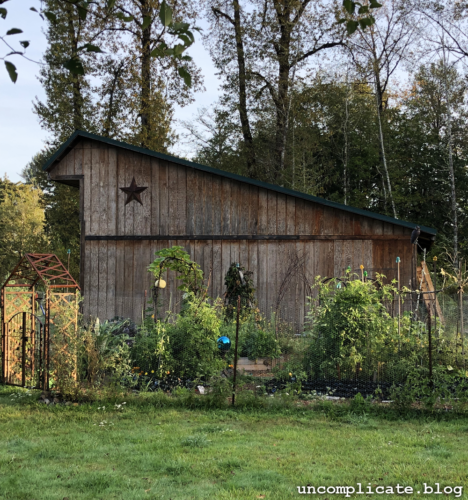
Well, technically this was Year 2; the first year’s garden consisted of a couple pots of tomatoes on the patio while we watched the movement of sun and shade through the growing season and started getting to know the property.
Months of sketching, mapping, & measuring led up to this. I used to be the throw-stuff-together-however-I-can-and-call-it-good type, but I now share my space and my life with a mechanical engineer, so stuff gets measured and steps don’t get skipped. And I’ve got to admit, it’s kind of awesome this way.
We’ve got crazy-dense hard red clay here that sticks to and looks like dog poop on your boots, so I thought raised beds would be the way to go.
I’ve always built my beds with this no-till layered method: I first saw it in one of my parents’ Organic Gardening magazines when I was a kid (yeah, I was that little girl who read OG and Prevention magazines for fun). Although I’m pretty sure it has a real name that makes it sound more official, I’ve always just called it Lazy-Bed Gardening.
For smaller beds I’ll turn over a section of turf/weeds (didn’t do that here) spread a layer or two of cardboard and/or newspaper, a layer of raw/un-composted clippings, food & wood scraps, whatever’s on hand – then top it off with finished compost and garden soil. The cardboard/paper decomposes in a couple years but (supposedly) not until it’s suppressed any weeds still alive below. Every year as more layers break down I just add new soil/compost to the top.
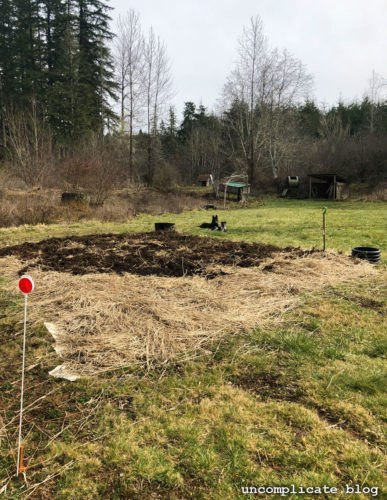
I’d been saving all our big moving boxes for this as we unpacked. A ton of tall grass cleared from the creek area and 1-1/2 year’s of weeds & scraps seemed like a lot of composty-stuff to start with, but it just barely covered the cardboard. I ran over the whole mess a few times with the mower, then scooped the bulk of it into the bed areas.
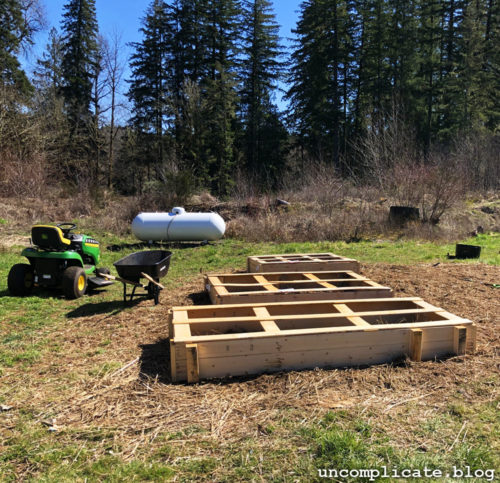
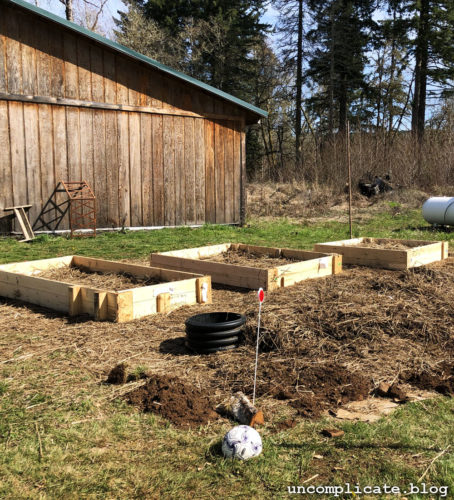
We salvaged shipping frames for the 3 main beds from a local window manufacturer (normally they get broken down and trashed). I’d meticulously disassembled my bottle borders from my Seattle garden (I know, there are other bottles in the world, but I already had these) and they were packed and moved here. Rocks and random garbage found around the property finished the beds.
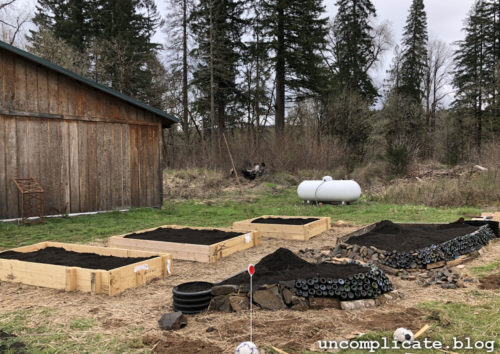
I showed JD some photos of squash-arches I’d saved in Pinterest and he designed the structures using branches and brush cleaned up around the property: we pre-assembled sections on the ground then screwed them to the bed-frames for stability.
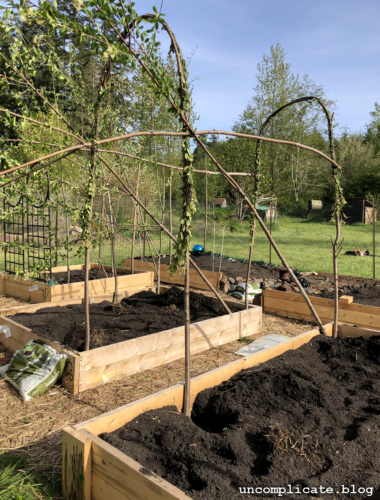
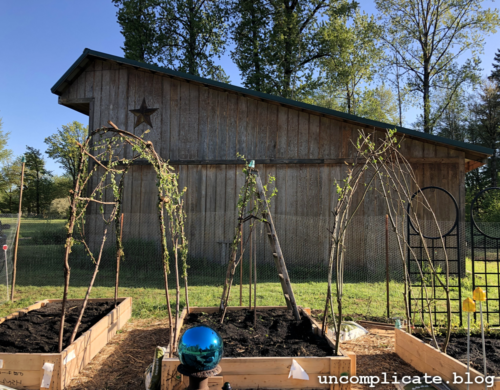
By early May it was ready for planting. The topsoil blend I’d bought was seriously nitrogen-deficient and even with purchased/bagged compost my little seedlings had a super rocky start. We still don’t have chickens and I’d already used every bit of my compost building the beds so all my kitchen scraps and weed tops got buried in next to the babies and I fed them every concoction I could throw together trying to keep them from withering away in stunted, yellow-brown sadness.
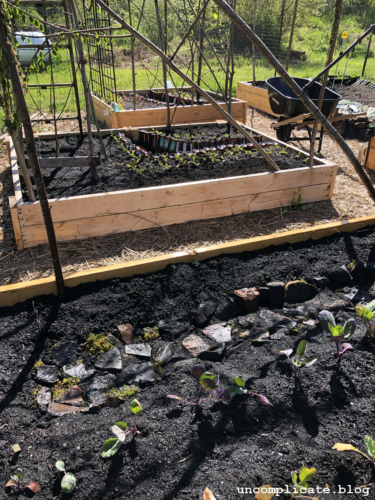
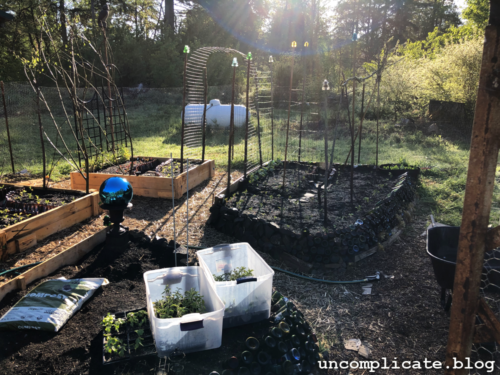
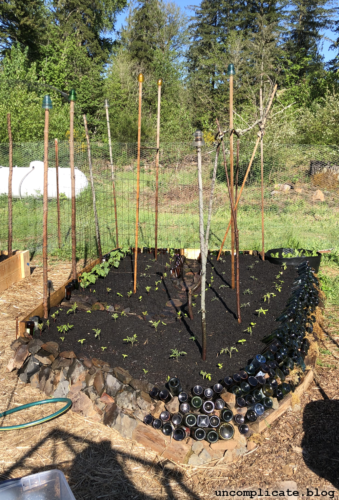
By June, stuff was filling out and leaves were all green again. I was feeling like a real gardener. Someone in a nearby town had advertised free wood chips on Facebook Marketplace after removing a huge old pine tree from their front yard, and we gathered 3 truckloads to spread in the pathways between beds.
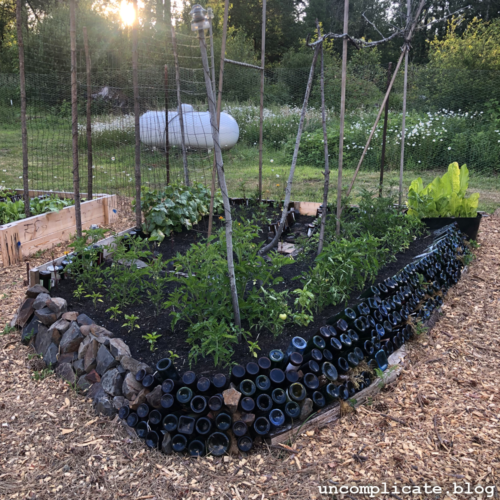
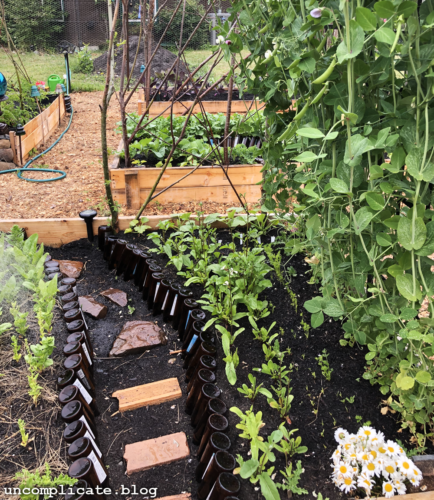
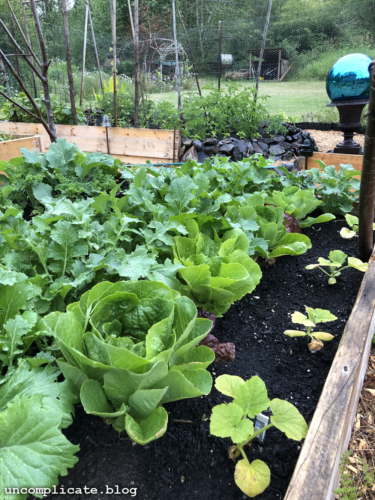
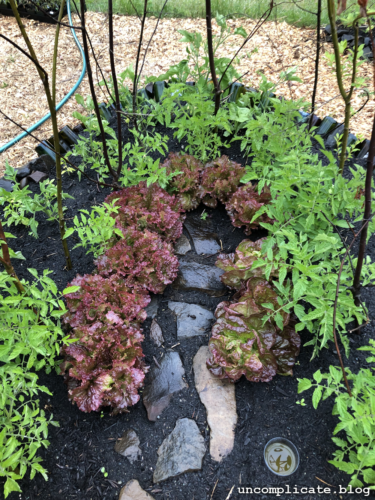
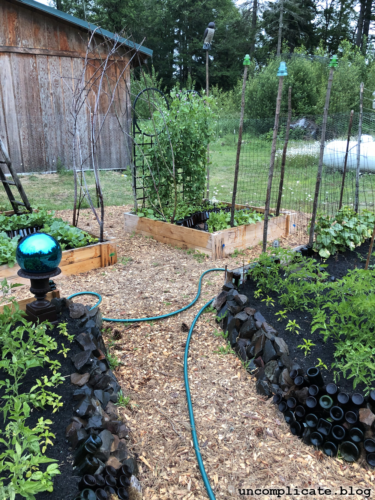
By August, I was like “we’re gonna need a bigger boat.” Flimsy posts weren’t enough for these tomatoes so almost daily I was adding sticks and tying up vines and trying to keep them upright. One morning I came out to the entire tangled structure of 30 or so plants leaning out of the bed at a 45 degree angle and had to run around finding stuff to prop it up before it took out one of the other beds as well.
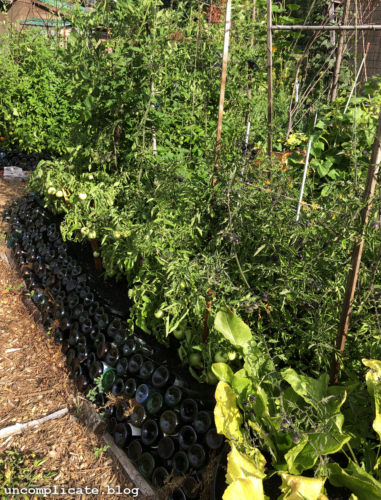
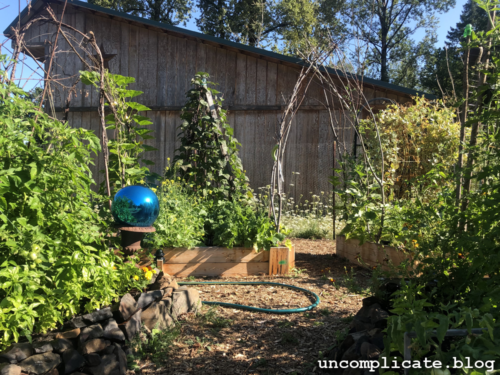
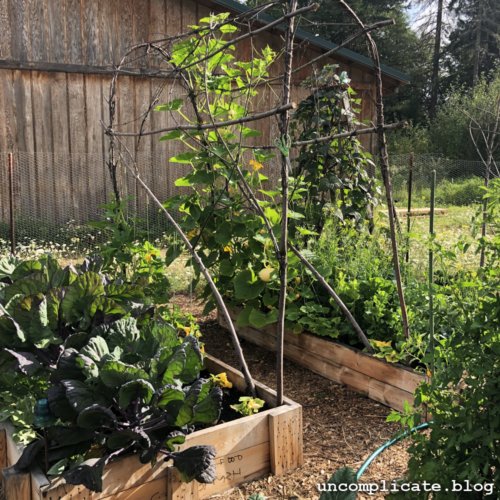
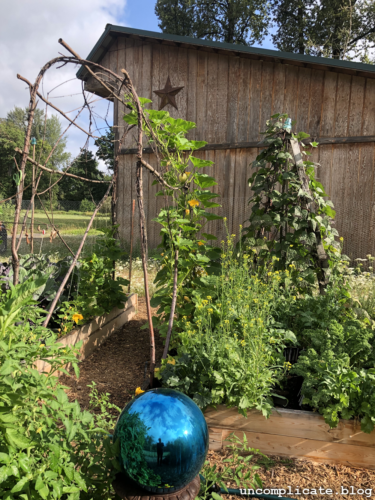
I’ve been growing vegetables and herbs however I could manage for over 30 years but this is the first time I’ve had space for a dedicated vegetable garden with full-sun all day long, so I’m learning as I go. And in 1 year there have been a lot of lessons to learn.
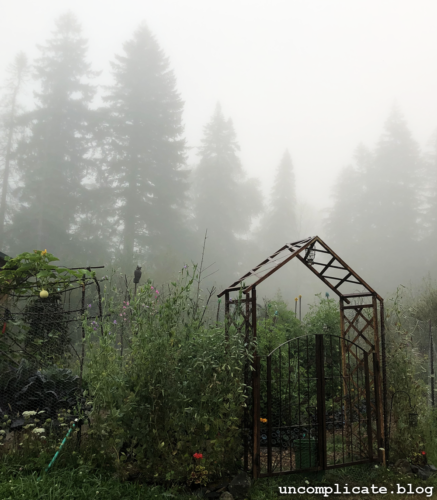
I’ve always planted super-tightly which worked fine in the limited space/sun of my city garden. But the tomatoes were a ridiculous mess to manage and even harder to harvest, and maybe 1/3 of my Brussels sprouts and kohlrabi produced at all because they were suffering in the shade of those that did. I suspect that might have been the issue with a lot of my winter squash as well: 1 or 2 plants thrived and the rest just kind of sat there looking small and bored. My peppers which had been planted in the prime south-facing warm-soil spots in the 2 big beds got lost under the shade of the monster tomato vines anyway, and I got maybe 3 or 4 peppers from over a dozen plants.
My old chop-and-drop weeding method, immediately burying bits of the pesky buggers for a little extra nutrition, doesn’t work here either. These weeds are like creepy little aliens from a sci-fi movie: multiplying and becoming more powerful than ever when cut to bits or buried more deeply. Also, I’ve recently noticed the grass that pops up in my pathways has roots that run along the top of the cardboard layer: yup, it’s all that dried-but-not-composted grass I laid down first.
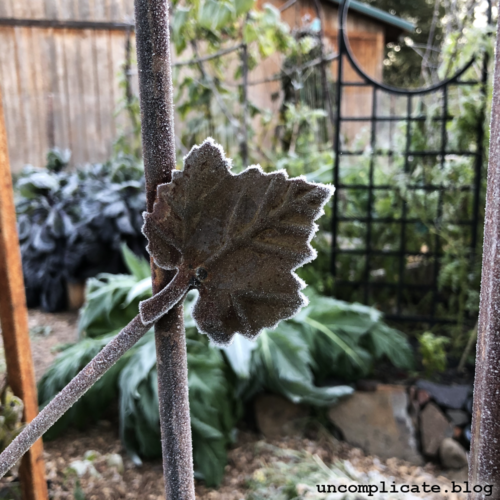
I’d like to think I know what I’m doing now but like everything else, there are a lot more lessons in store for me to learn. As May starts to wind down already I’m still trying to wrap up this year’s planting and be sure my little babies have the best chance to survive and thrive in the months ahead. Where there’s a garden, there’s always hope.